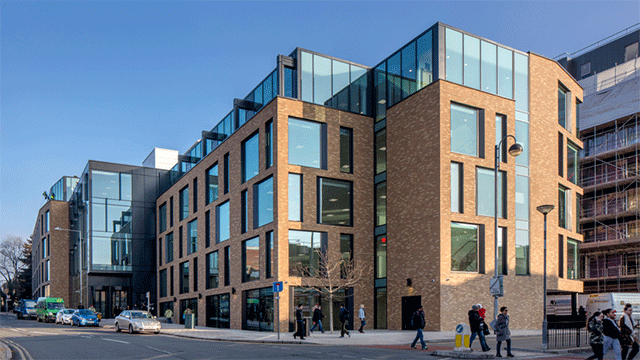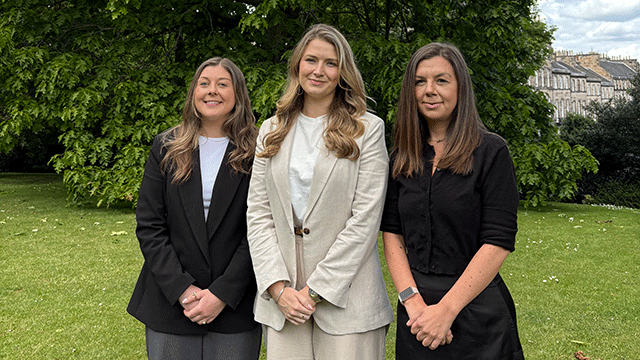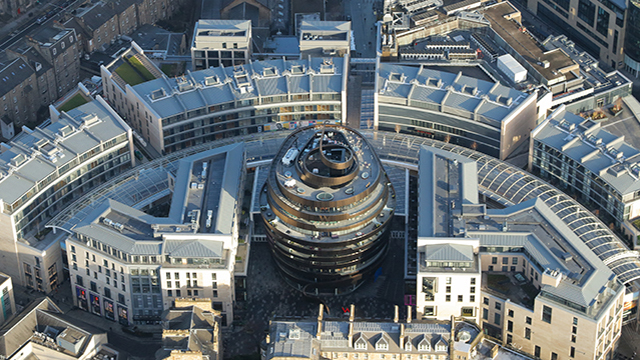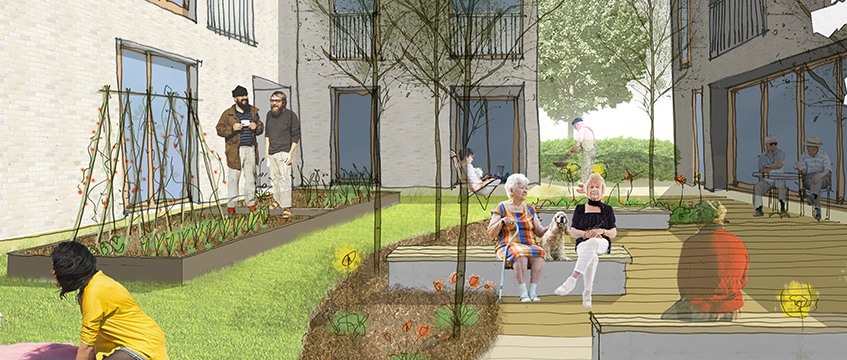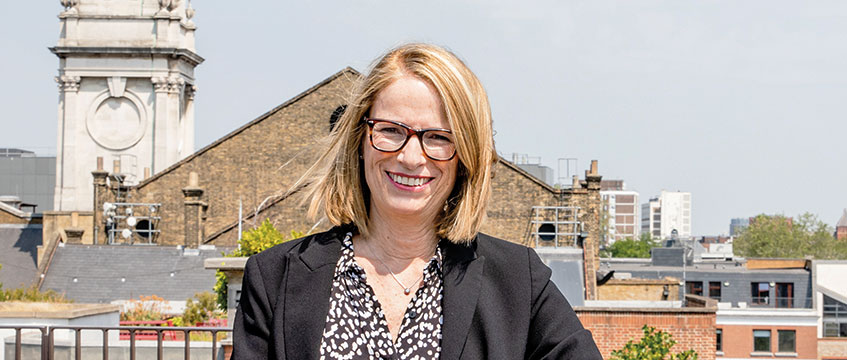There are more than 1m older LGBT people living in the UK.
 Almost half of them have felt discriminated against when accessing social services, almost three-quarters are anxious about disclosing their sexuality to care staff, and an overwhelming majority are worried about who will care for them when they get older.
Almost half of them have felt discriminated against when accessing social services, almost three-quarters are anxious about disclosing their sexuality to care staff, and an overwhelming majority are worried about who will care for them when they get older.
There is no denying that those are worrying statistics in 2017 but, shocking or not, of what interest is that to the property industry?
Potentially a lot.
According to a recent report from IBISWorld, the retirement home market in the UK is expected to produce £5.3bn in revenues in the 2017-18 financial year, a 0.6% increase over the previous year.
It is a market with no single dominant player – the four biggest operators collect just 8% of total revenues – and a market that has no choice but to grow as, by 2025, 20% of the UK population will be aged over 65.
And while in the UK only 0.6% of retirees live in retirement housing, elsewhere in the ageing, developed world the figure is more than 5%. Surely the UK will follow suit?
The style of retirement homes being developed is already changing, with more focus on lifestyle and living and a move away from the grey, dingy homes where the elderly see out their final years, rather than enjoy them.
Huge potential
The potential for retirement homes is massive, if the product and the system is right.
JLL estimates that there is a need for an additional 750,000 housing with care units by 2025, which would equate to almost 50% of all new homes being built.
In the LGBT market, the potential might be even bigger. The older LGBT community is less likely to have offspring that can care for them in their old age, making them more than twice as likely as their straight peers to expect to rely on a range of external services as they get older.
This was an issue that James Greenshields and the team at Tonic identified, and one they could not ignore. More importantly, they believed it was an issue that could be solved.
Tonic was established in 2014 as a community interest company. With funding from a number of charities including Barrow Cadbury Trust, Comic Relief, Joseph Rowntree Foundation, Trust for London and the Tudor Trust, the team at Tonic starting researching the market, finding out about the problems faced by older LGBT people wanting to access retirement and care schemes and what the potential solutions could be.
“I met with 12 chief executives of retirement housing providers and every single one of them acknowledged that there was a problem,” says Greenshields. “I also visited 12 retirement schemes in and around London and 11 out of 12 of them, when I asked how many LGBT residents they had, said none. Statistically that can’t be right and just isn’t possible.”
>>Tonic Housing are currently recruiting for a CEO. To find out more and to apply click here
But the numbers should not lie – that is, unless fear and anxiety are forcing older LGBT people back into the closet.
“It seemed exceptionally poignant to me that in the 50th year of decriminalisation, we are finding people who had come through that period, having been criminalised by their sexuality alone, that were now at this vulnerable stage of their lives and were experiencing fear again,” says Greenshields.
With the research done and a second round of funding from its partner charities secured, Tonic is now preparing for action.
Challenging the status quo
Greenshields says the company has a three-tier action plan. The first stage is building what he says will be the UK’s first LGBT-majority retirement scheme.
Majority LGBT is important, says Greenshield – this is not about building ghettos, but about building a scheme where the assumption when you come into it is that you are LGBT and not heterosexual.
He adds: “We are not asking for our own space. We are asking for a space where there is a focus and a profile that is LGBT majority in the way that arguably every single other scheme in the UK is hetero-normative.”
Once a scheme is developed, the second and third tiers of Tonic’s business plan are to develop a LGBT-sensitive domiciliary care service and then share all that it has learnt with the mainstream market.
The search for a site has now begun in earnest, with a self-imposed deadline to have a plot secured by the end of the year.
Much of the search is focused on Lewisham, where the local council has been accommodating, offering a handful of sites.
“We want to go to a space where we will be wanted,” says Greenshields. “We want to challenge the status quo, regardless of the LGBT tag. We think this is an exciting opportunity to redefine what it means to grow older institutionally so that people aspire to live in this type of environment.
“We would like people to come in at a younger age as well so that they can enjoy everything that is going on.”
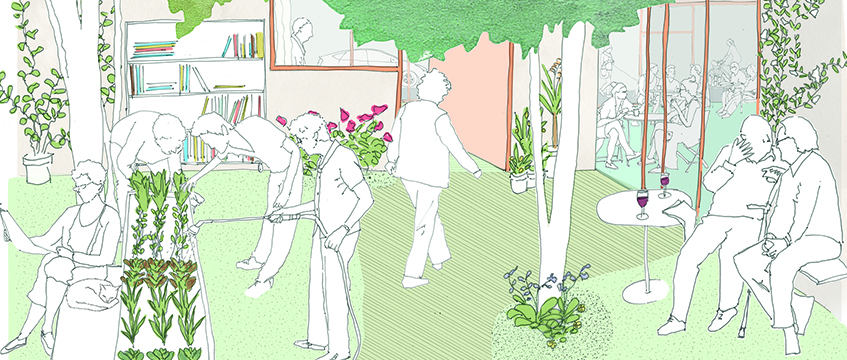
Tonic has been working with urban design consultancy Publica and architects Pollard Thomas Edwards to design the first Tonic Centre.
Borrowing ideas from schemes that have already proven successful in Los Angeles and Berlin, and using its research, the Tonic Centre will ideally form part of a mixed-use scheme, providing a community hub, cinema, theatre or business centre.
“We want people to walk down the high street and say ‘I want to live there’. We don’t want it to scream older people’s living. What happens on the ground floor needs to be dynamic and interesting,” says Greenshields.
“In LA, they have created a cultural hub where there is a theatre, café and restaurant that is flourishing. You feel drawn to the space. It leads you from the pavement into it.”
We want people to walk down the high street and say ‘I want to live there’. We don’t want it to scream older people’s living.”
James Greenshields, Tonic
He adds: “We are trying to address the issue of isolation and loneliness so want to encourage people to mix with others. This will inform the design of the residential spaces, more communal big kitchens and smaller private kitchens perhaps, acknowledging that many of the households will be single people and acknowledging that many people are coming into this space with aspirations to find companionship.
“It is important that we create the space that enables that.”
Ideally, Tonic is looking for sites as close to central London as possible with good public transport links. The first Tonic Centre should be around 75-100 homes, meaning it would need a site of between 1.5-3.4 acres, dependent on density.
Social value
With enough funding to get itself to the build stage, the Tonic team has begun speaking with social and ethical investors about the next stage of development. Greenshields is confident there will be plenty of interest in the project.
“In LA they have raised more than 50% of their $100m [£77m] budget for a second retirement community from the LGBT community,” he says.
“There are a lot of very rich people in LA, but there are also a lot of very rich people in London. Is there a way we can galvanise that sense of excitement, not only in terms of getting donations but also in more imaginative ways through community bond issues etc? You can invest in this if you have £500 upwards. We think that accessing the funding so that we can compete is within our means.”
And Greenshields is not afraid to use the “community interest” angle either.
“We have a social value that I have seen when talking to councils gets a good reaction. Councils realise that they can help serve the need of a marginalised constituency. We are happy to play that role and whatever benefit it can bring to us and the developer,” he says.
So, with a potential consumer base of 1m and a potentially less difficult planning sell to local councils, perhaps a LGBT majority retirement community really could be the next big alternative sector in real estate.
Find out more about Tonic at www.tonichousing.org.uk
Regional ambitions
Manchester City Council is also seeking to develop an LGBT majority retirement community.
Earlier this year it announced plans to develop an extra care scheme that would house a minimum of 51% LGBT residents. The project, supported by Stonewall Housing, the LGBT Foundation and the Homes & Communities Agency, is yet secure a site.
The plans came about after a recent report from the LGBT Foundation revealed that there were more than 7,000 people in Manchester over the age of 50 that identify as LGBT, and that they had higher levels of loneliness and isolation than their heterosexual peers.
Councillor Bev Craig, lead member for LGBT women at Manchester City Council, says: “Older people should never feel isolated by who they are, or who they love.
“Alongside improving this in general provision, it is time that we develop a scheme in Manchester that provides care for LGBT people, providing a place where the LGBT community can give each other a network of support in older age.”
Main image © Pollard Thomas Edwards
To send feedback, e-mail Samantha.McClary@egi.co.uk or tweet @Samanthamcclary or @estatesgazette




